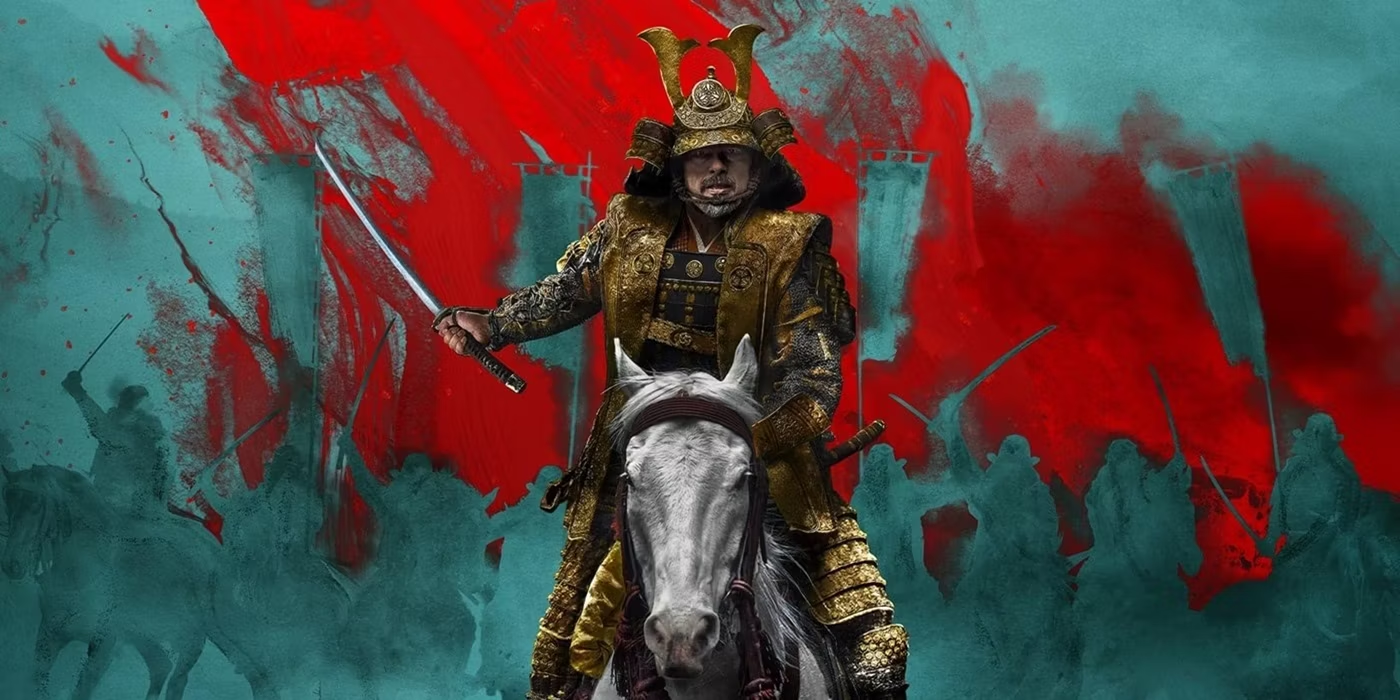Sometimes, it’s funny how life works out. Late last November (2023), my slow journey working through my neglected older bookshelf led me to Eiko Ikegami’s The Taming of the Samurai. Japan in any time period is usually outside my specialty areas, and so it was fascinating to read about the evolution of the samurai class and Japan’s honor culture from their medieval inception up to the twentieth century. Then, scarcely four months later, the miniseries Shogun premiered on FX and I found myself in the unique position of being fairly well acquainted with the historical milieu of a show that deals with a topic that I’m generally not that knowledgeable about. Cautiously excited by the gorgeous-looking trailers, I tuned in for what would prove a thoroughly edifying historical experience.
Based on the 1975 James Clavell novel of the same name, Shogun recounts the tale of the rise of the Tokugawa shogunate in early seventeenth-century Japan as told through the eyes of the shipwrecked English adventurer John Blackthorne–or at least, that’s the history behind the novel. For some reason that remains unexplained, Clavell and both subsequent miniseries replaced the name of every major player in the narrative with a fictional counterpart, even though the events depicted remain largely faithful to actual events. Thus the future shogun Tokugawa Ieyasu becomes Lord Yoshi Toranaga, his opponent Ishida Mitsunari, Lord Ishido; tragic noblewoman Hosokawa Gracia, Todo Mariko; and the historical Englishman William Adams, Blackthorne, among many others. Aside from this oddity, however, the history on display in Shogun is truly excellent. The costuming and sets are indeed impeccable, and the entire show is a treat to watch even if there wasn’t any story–including the most realistic depiction of the effect of artillery on the human body I’ve ever seen on screen. Attention to detail abounds, even extending to using early modern Japanese in place of the modern language for its dialogue. In a larger sense, the honor culture of the early modern, pre-Tokugawa samurai is depicted largely accurately, and while the show perhaps overemphasizes the Japanese fixation with seppuku (ritualized suicide), this is more an issue of the adapted source material, and is only a problem of quantity; seppuku was very real, and was very much used in all the ways it is employed in Shogun. I also applaud that the skills and knowledge of Blackthorne are confined to what an English pilot would reasonably be masterful of: sailing and, to a lesser extent, naval artillery are in his wheelhouse, military tactics and other technology are very much not.
What flaws emerge in Shogun are more a matter of presentation than content. Narratively, the show has issues with telling, rather than showing, much of its (sometimes too-convenient) culmination and climax in a way that deprived me of the feeling of exultation such a slow-burn, twisting show should have delivered when the protagonist’s cunning schemes finally reached fruition. Yet my biggest personal critique of the show stems from an approach that I would usually regard as a strength–and still do here, to an extent. From its very first episode, Shogun establishes a narrative heavily reliant on cultural relativism. This makes sense, especially in a modern storytelling environment where Eurocentrism and the associated white savior complex are increasingly unpopular and called out. Blackthorne is a fish out of water, and any version of that kind of story worth its salt needs to establish some element of shared humanity and mutual lessons between its characters. Shogun certainly does this, but stumbles at just how relative (or not) its cultures can appear. Yes, through his underdeveloped sense of hygiene, borderline repulsive culinary traditions, and selfish motives in leading his crew to Japan, Blackthorne seriously undercuts notions of European exceptionalism or nobility of purpose, and rightly so. Yet nowhere does the show render similar judgment on the peculiarities of early modern Japanese culture save through the protestations of Blackthorne–who ultimately rejects his crew, embraces Japanese culture (even volunteering to be his Mariko’s second when she intends to commit seppuku), and only half-heartedly clings to the notion of returning to England by the series conclusion. At best, perhaps the showrunners thought that many of these peculiarities would be obviously questionable to modern audiences and did not bear more explicit condemnation, yet at times it really did feel like Shogun held up this warped, archaic sense of patriarchal honor and courage as a model for emulation, and I’ve even heard online commentators remark that we could all learn lessons from Shogun. I reject the very notion. When a Portuguese sailor in the first episode advises Blackthorne (and the audience) to reflect on who the barbarians really are when they come in sight of Osaka–in the very same episode in which, earlier, a samurai was ordered by his own lord to kill not only himself but also his infant child as punishment for speaking out of turn in that lord’s defense–my emphatic answer is “All of you.”
All this combined for me into an inability to truly connect with any of Shogun’s characters, as a sensible modern viewer should really consider them all to be horrible or, at best, unsympathetic characters. Ironically, this is the height of historical accuracy; we’ve discussed before on Concerning History how the effort to make characters relatable can lead to anachronistic, modern values being inserted into inappropriate time periods. Yet taken together with the uninspiring plot and preponderance of subtitles, what results is more the feeling of reading a well-written monograph or admiring a beautiful painting than watching a gripping prestige drama. Shogun is a work I’d be eager to use as a teaching aid in the classroom (with some creative editing and skipping around, of course), but it’s unlikely that I’ll ever feel the urge to revisit it for any other reason in the future.
